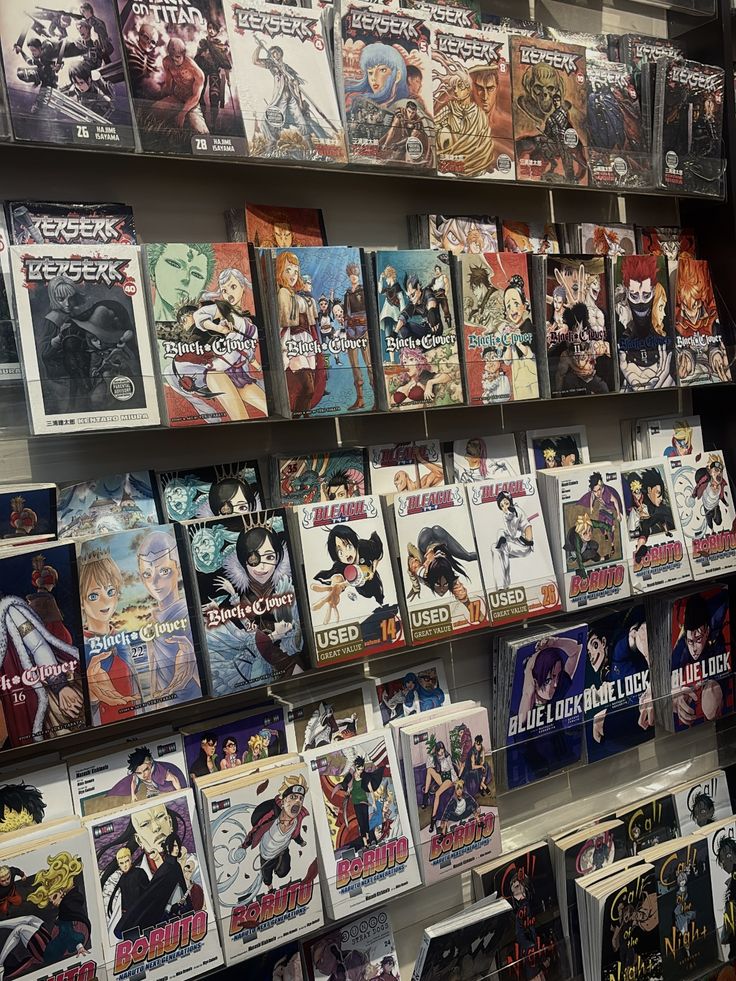
What Weekly vs Monthly Manga Releases Teach Us About Storytelling
Share
Nothing beats that buzz when a new manga chapter drops. You flip through the pages, heart racing, only to hit a cliffhanger that leaves you staring at the wall until next time. Whether it's every week or once a month, that wait shapes how we connect with the story. Weekly releases, like in One Piece, keep the action rolling non-stop. Monthly ones, think Berserk, let tales breathe and build in ways that stick with you longer.
These schedules aren't just about when you get your fix; they change how stories unfold. Weekly manga pushes quick twists and constant hooks to grab you tight. Monthly gives room for layers, from deep character moments to stunning art. Popular series show this in action: One Piece's endless adventure thrives on weekly drops that build a massive fanbase. Berserk's dark world feels richer thanks to monthly pacing that lets every panel count.
In the end, both teach us big lessons about storytelling. They show how pace controls tension, depth adds heart, and smart timing boosts reader bonds. Let's break it down to see what these rhythms mean for creators and fans alike.

How Weekly Releases Keep Stories Racing Ahead
Weekly manga hits like a sprint. Series in magazines such as Weekly Shonen Jump pump out chapters every seven days, often 14 to 20 pages long. This setup demands speed. Creators craft plots that surge forward, dropping bombshells to pull readers back fast. Take One Piece or My Hero Academia: these shonen hits use short bursts to ramp up fights and reveals. The result? Stories that feel alive and urgent, mirroring real-life drama where things pile on quick.
But this pace comes with trade-offs. Artists face tight deadlines, which can mean less time for fine details in art or side plots. Still, the format shines at building habits. Fans tune in weekly, like catching a TV show. It fosters communities buzzing online, sharing theories right after release. Data from fan forums shows how this rhythm keeps engagement high, with shorter chapters designed for bite-sized thrills. Yet, rushed elements sometimes show; plots might skip steps to hit the next hook.
Pros outweigh cons for action-packed tales. Weekly drops teach storytellers to master momentum. You learn to end strong, leaving readers hungry. Cons include burnout risk, which hits quality over time. For instance, long runners like Dragon Ball juggled this by leaning on epic battles that span issues. Overall, weekly manga proves serial formats excel at gripping audiences through steady flow.
The Thrill of Cliffhangers in Weekly Manga
Cliffhangers rule weekly releases. Each chapter ends on a peak, like a punch frozen mid-air. In Dragon Ball, Goku's fights often cut off right at the big clash, making you count days till more. This trick builds raw tension. Readers feel the pull, that itch to know what happens next.
Storytellers pick up a key skill here: control anticipation. Short waits amplify stakes, turning pages into events. It's like a mate teasing a story mid-tale; you can't walk away. Weekly formats nail this, keeping tales fresh and fans locked in.

Challenges of Tight Deadlines for Creators
Weekly schedules grind hard on mangaka. They churn out 40 to 50 chapters a year, often solo with assistants. Reports highlight grueling hours, sometimes 80 a week, leading to health woes and sloppy spots in stories. For example, rushed panels might lack polish, affecting immersion.
This teaches balance in creativity. Creators must prioritize core beats under pressure, but sustainability matters. Fans notice when fatigue shows; tales lose edge. Lessons point to pacing work wisely, protecting the spark that fuels great narratives. Check out discussions on manga artists' work ethic for real insights into these demands.
Why Monthly Releases Allow Deeper Storytelling
Monthly manga shifts to a marathon vibe. Chapters drop once a month, often longer than weekly ones. This extra time lets artists layer in details that weekly can't match. Series like Chainsaw Man or Attack on Titan's final arcs use this space for meaty developments. You get full scenes, not snippets, with art that pops off the page.
The wait builds hype differently. Fans savour each drop like a special event, not a routine. Monthly formats create mini-arcs that feel complete yet tease more. Data backs this: longer chapters allow richer plots, cutting rush for better flow. Pros include top-notch quality; artists refine every line. Cons? Gaps can test patience, with some dropping off if the story stalls.
Still, depth wins out. Monthly teaches investing in immersion over speed. Characters grow real through backstories unpacked slow. Art flourishes too, with elaborate designs that draw you in. For fans of world-building, this rhythm delivers satisfaction that lingers. It shows how breathing room elevates tales, making waits worthwhile.

Building Rich Worlds with More Time
Extra weeks mean elaborate setups. In Fullmetal Alchemist, monthly slots let sprawling lore unfold without cuts. Backstories weave in natural, pulling you deeper into the universe.
Writers learn immersion trumps haste. Detailed panels and subplots pay off, forging bonds that last. It's like tending a garden; time yields fuller blooms. Monthly shines here, turning pages into gateways to vast realms.
Balancing Wait Times with Reader Loyalty
Long gaps test fans, but quality holds them. Dedicated readers stick for the payoff, like in Berserk's epic turns. Impatience hits casuals, though; stories must hook strong early.
This highlights pacing long hauls. Build loyalty with substance, not frequency. Creators gauge audiences, blending teases to bridge waits. Fans stay true when each chapter feels earned, fostering tight-knit groups.
Key Lessons from Both Schedules for Better Tales
Weekly and monthly each bring strengths to the table. Weekly nails engagement through hooks and habit-forming drops, perfect for high-energy arcs. Monthly counters with polish and depth, ideal for complex weaves. Blend them? Some series switch mid-run, like Attack on Titan, adapting to needs.
Both stress artist health as key to quality. Grueling weekly loads can spark burnout, while monthly eases strain for sharper work. For other media, like webtoons, these ideas apply: quick updates for buzz, slower for substance. Aspiring creators take note: match rhythm to story type. Action thrives weekly; introspection suits monthly.
Real-time chats on forums reveal fans split but agree on one thing: pace shapes connection. Weekly builds quick loyalty; monthly deepens it. Use these to craft tales that fit your vision, always eyeing reader pull.
Conclusion
Weekly releases drive fast-paced hooks and steady engagement, while monthly ones craft deeper layers and refined art. Together, they show how timing tweaks pacing, adds heart, and strengthens bonds with readers. From One Piece's weekly rushes to Berserk's monthly builds, these schedules prove stories adapt to any beat.
Next time you grab a chapter, think about its rhythm. Does your favourite series shine weekly or monthly? Give both a go; you might spot new ways tales grab you. Great storytelling flexes with the flow, turning waits into wins. What schedule pulls you in most? Share below, and keep chasing those page-turners.
